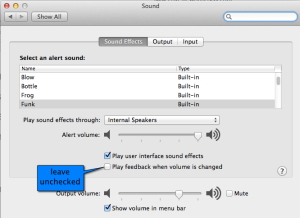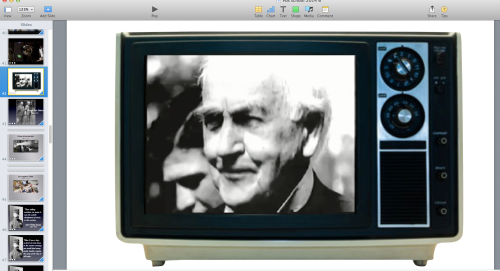Last month, June 2014, I was part of a nationwide travelling convention intended to bring high school teachers up to date with the field of Positive Psychology and what it can offer students.
This year its organisers wanted to pay particular attention to the place of Technologies in mental health, and so I was tapped to offer a series of talks as well as presentation skills workshops.
The talks were part of a seminar featuring how to best understand how current and imminent technologies have a role to play in mental health in schools. The presentation skills effort was a one hour talk, showcasing the highlights of my half day and longer workshops.
All in all, there were about a dozen speakers, comprised of authors, psychologists, researchers and technologists including those from the Australian arms of Microsoft and Google, who visited the cities of Brisbane, Perth, Melbourne and Sydney.
The arrangement, as told to me by the organisers, was that each city would receive the same presentations. On the surface, that sounds ideal and easy: the same talk four times. But as it turns out for a few of the presenters, including myself, this wasn’t ideal and in fact we gave variations for all of our presentations. It was an iterative process, learning from each presentation what worked best and which slides and ideas appealed to the audience.
By the fourth conference I felt I had “honed” my presentations and delivered the “biggest bang for the buck”; that is, in the time I had these were my most impactful presentations.
During each of the conferences, conducted over two days including large auditoriums and break out rooms for smaller concurrent workshops, I was able to attend as an audience member and watch others in action.
For each conference, there were times when all the attendees (400+) would gather in one large auditorium to hear the speakers, including me on technologies.
What I, and the organisers, found interesting were those highly paid professional speakers who gave the same presentation each time. I was perhaps the least known to the audience of all the presenters and likely the least financially compensated, so I had to prove myself and win over the audiences with my content and presentation style. Which is why I welcomed the opportunity to present and improve each time.
By the fourth conference, three weeks after we had started, the organisers appeared a little frustrated with the “sameness” of the highly paid speakers. Perhaps they had become insensitive to the content after so many repetitions, or perhaps they became more critical of the content itself and the delivery style. Perhaps they had become more objectively reflective of the presentations without the anxiety of how the conferences were going over. (By the fourth, the series was considered both a financial and educational success).
I shared with the organisers my own sense of certain presenters “going through the motions”, whereas I had taken on board feedback and my own personal debrief to change my presentations. I was a little surprised when the organisers shared their own sense of disappointment and unmet expectations. Their highly paid speakers had been a drawcard and given the conference series some gravitas. But by the fourth presentation, the presentations had lost their punch and like the Emporer’s Clothes, were revealed for what they were: A collage of ideas, on passable slides, hung together with TED-type videos.
This was brought home to me in one of my presentation skills sessions when a very perceptive audience member, who had witnessed one highly paid speaker address the entire conference and had come away clearly disappointed, asked me about videos in presentations.
Usually, if I’m asked about videos, it’s more to do with issues of copyright, or more mundane aspects such as how to import videos into their Powerpoint stacks. (Thankfully, more recent versions of Powerpoint have made this more Keynote-like, with some built-in editing features in addition).
So, during my last workshop, I was taken aback when the audience member asked if there’s a scenario where you can put too many videos into a presentation. It was in fact the same thought I’d had the same morning witnessing the highly paid speaker I’ve referenced previously.
When asked of her concerns, the audience member seemed somewhat unable to describe quite what it was that was concerning her, which made it difficult to give a good answer. It also made it difficult that the speaker in question was in my audience!
I offered that there are no “rules” one can refer to, such as “no video more than 3 minutes long”, or no more than n videos per 30 minutes of presenting.
But afterwards, it bothered me that with so many TED talks being repurposed, presenters are now becoming lazy, using videos like old-fashioned cue cards or text-heavy slides to convey complex ideas. And this is what the conference organisers had shared with me, without being as specific: that their well-paid speakers were using others’ work to illustrate their ideas, and rather than using one or two very cogent and on-point videos, their presentations were now more than 50% taken up with the work of others.
Now, there is skill needed to locate and then include in one’s talk appropriate video materials. But it’s clear too that there comes a point when audiences see through this, the presenter has lost control of the presentation and instead has become the “host” of a collection of videos, like a version of Australia’s or America’s Funniest Home Videos.
Let’s review for one moment the obvious video failures we see over and over again in conference presentations by presenters who need to up skill their mechanical aptitude, such as:
1. Rather than smoothly transitioning to the slide embedded with a video, they need to drop out of the presentation stack (revealing the remaining 300 slides), locate the video on the desktop or in a folder nested three levels down, and open it in Windows Media Player so we can see the Play and Fast Forward buttons, and how much time remains. If we’re unlucky, they will not know how to have it play fullscreen, so we see a portion of their Windows desktop screen and all their short cuts.
2. The presenter hasn’t tested the audio system so the audience is either blasted or the sound is either mute or too low to hear. Then we watch as they “click, click, click” the volume button (if they can find it). Memo to Mac Users: Make sure you go to System Preferences->Sound->Sound Effects and leave the “Play feedback when volume is changed” unchecked, (below):
3. Presenters have chosen video of such low resolution that it has to be played the size of a postage stamp lest it pixelate so badly it becomes unwatchable.
4. Being a little smart, they drop out of their presentation, go to the YouTube page they have bookmarked, then wonder why the video isn’t playing (um, you need an internet connection) or if there is a connection it is so poor the video continuously buffers.
5. Not knowing how to edit using video software, they have dumped a half hour video onto a slide, haven’t cued it up, then dragged the slider to “about the right position” telling us what they want us to see is about to start “… about now….”
These are some of the mechanical issues so often seen at conferences.
But what of the conceptual errors in presentations?
The biggest problem as I see it is one amateur joke tellers make: they haven’t properly set up the story, so as to deliver the punchline and grab a laugh.
In the same way, I’ve witnessed presenters simply drop into a video and while it’s playing explain what the audience is viewing and why it’s relevant to their talk. Not just is it splitting audience attention – “what do I listen to – the video or the speaker?” – but it can easily leave the audience in a state of unease and confusion.
In my own experience, I spend time “setting up” the video or at least the point of shifting gears away from having the audience attend to what I’m saying, to what is on display on the screen. This is no different than a stage magician controlling the audience’s attention in order to direct or misdirect them.
So I might say, “One person who seems to understand this principle, is Dr. X. In addition to her writings, last year she presented at Conference Y, and I’d like to show you a little of her presentation. In particular, as you view this, notice….”
I then get the heck away from the screen and stand to the side of the room observing the audience. I always show video full screen, or embed them in a familiar object, such as a TV screen image, as below.
What you see above is a slide from a Keynote 6 stack from my Positive Schools technology presentation. It shows a scene from the “Crazy Ones” Apple advertisement of 1997. I placed the clip, which I finished at Edison portrayed in a still shot, in a portable TV set of the era, to set the scene.
The idea was to introduce the video, and then stop at this point and ask the audience if they recognise any of the people seen, such as Richard Branson, Maria Callas, etc. I then segue into a discussion of Edison and his inventions and how they upset existing industries including energy (gas), and music (Live musicians).
A curious aside: For my Melbourne presentation, I had discovered a wonderful video from an Apple Distinguished Educator called Ray Nashar. I didn’t know it at the time, but after my presentation an audience member had tweeted to Ray that I had used his video in my talk. I then found out he was a local teacher.
Below, is my Keynote slide where I introduce his short video, created entirely in Keynote. I introduced the video by first repurposing some of his slides, placing cropped images of the two gentlemen below on the one slide – they are Ray Kurzweill and Sir Ken Robinson – then going into the video having set up who these featured people were and why was including Ray’s video in my talk.
As it turned out, this was one of the most requested links I was ask for after my talk, via email or Twitter.
Here’s Ray Nashar video, Education is a Conversation, below, and you’ll see why it was a little effortful to create the combined slide, above:
Videos in presentations must have their own reason for being there
Each presenter will develop their own means by which to introduce videos, but they must have a reason for being included, rather than simply fill time or make the presenter’s job easier.
Some presentation trainers might quote you ratios or percentages of video to overall presentation, but I can locate no empirical evidence to show what is best for any given audience or subject.
The overarching principle – ALWAYS – is that you, the presenter, remain in charge of the presentation, even if you’re showing videos of people of great celebrity or fame. They become YOUR support acts, and your audience will want to come to appreciate your wise and clever selection of brief clips which best illustrate your ideas, in addition to what you say, what you ask, what other graphics or text you use, and what you ask the audience to do, implicitly or explicitly.
Just like a magician with his or her props, which help to tell a story for which there is a surprise punchline, your video selection helps your audience stay engaged, reinforces your message, and helps you remain authentic and authoritative about your presentation subject.
As with your slides, they are not your presentation, but supplementary elements. Carefully chosen, embedded without showing how the magic is done (i.e., dropping out of your presentation to enter Window Media Player etc.) and of decent resolution and sound quality, your included videos can take a humble presentation and turn it into something special, making you a special presenter.
Don’t give away your power of engagement by having the videos tell all your story, but have them as your support act, assistants or props where the audience attention leaves and comes back to you on your command.





Great post Les.
I dare suggest there are some rules for video, similar to quotes.
If the original can convey better than you could paraphrase, then include, with source acknowledged. Remembering why you are there, to challenge, shape or guide the observers of you presentation…
If a video runs for much more than three minutes, your purpose is lost, and the original becomes imposed.
The challenge is to make a difference..KN has more chance of enabling that..
I note kn6 allows hyperlink jump out to safari and cud-tab jumps directly back ..very nice!
Also using reflector from an iPad to a MBA/MBP can use Bluetooth so wifi is not needed.
I suggest screen flow, (or QT with mavericks) to record, edit and optimise the video for keynote.
It is concerning there is no simple way to ‘stream’ a keynote presentation..slide share destroys the transitions..though iCloud with a fast link might work if there is little video.
The Ray Nashar ‘Education is a conversation’ is a classic and is a ‘must see’ for any communicator. The cube transition is simply done, and very effective!
Thanks for your rapid approval, Gary.
Reflector is a great app, and of course allows one to record your actions on an iOS device as a QT movie.
I have written about Telestream’s Screenflow previously, and indeed included it in my Macworld workshops this year in SFO. A very Mac like interface, I;ve just updated it with new transitions from Flowtility. It has come to save the day many times when Keynote hasn’t been up to the task I’ve set it.
In your section about hyperlinks, where you write “I note kn6 allows hyperlink jump out to safari and cud-tab (sic) jumps directly back ..very nice!”, that’s cmd-tab… How did you discover this, and is it documented? It is very effective and a better solution than hunting down the Keynote icon in the dock.
In terms of streaming Keynote, what about importing it as a quicktime file into Screenflow, editing for voice over, and length of slide on screen, then exporting to one of Screenflow’s options like YouTube or Vimeo etc?
Les
Les, thank you for your ongoing presentation and technology emails. I find them insightful and inspiring. No one enjoys being dismissed to videos in lieu of intelligent and deliberate presentation. It is insulting to assume the audience’s time and interest in the topic unworthy of the presenter’s best delivery. Thank you for pressing presenters to go beyond requisite.
Well thank you. To tell the truth, I was kind of warming up to ripping into all those “Give a TED-like talk” books I’m seeing in bookstores. But I thought I’d hold back first, and give a general and kinder overview first, before a post to come where I will rip in!
As usual, the more one remains audience-centric, rather than self-centric, the better received one’s presentations will be, in principle.
While the TED talks have refocussed our attention on the importance of presenting as a 21st century literacy, not all presentations you’ll give or witness will be 18″ in length. That’s a particular and rare beast, with little relevance to many of the scientists and IT specialists I guide. It has limited ability to extrapolate to half day or full day workshops, hour long academic lectures, or even 20″ conference papers.
There is still much to be taught and learnt in this domain. Ta for your time and attention, Shellie.
Les
Pingback: Too many videos in a presentation – forgetting that the audience is there to see YOU, not a TED talk video by spreadingscience
Pingback: Too many videos in a presentation – forgetting that the audience is there to see YOU, not a TED talk video | A Man With A Ph.D.
Pingback: Wiser Web Wednesday | Pete Denison
Great, as always, Les, but I confess I’ve been waiting for your lesson on using text in slide presentations. Did I miss it? It’s badly needed and I’d love to see your take on it.
I’ve been waiting too, as my ideas keep changing! It’s coming!
I’m on sabbatical this semester, remaking all my decks after some new instructional designs I’ve been playing around with for some time. The whole notion of text on slides is critical, and a lot of work; it isn’t as if templates are aplenty that really privilege text over bullet-point filler. I see in Keynote 6 that Apple is including a “quote” slide, but I don’t think those slides are there yet. Any ideas–even in flux–are welcome!